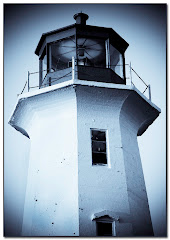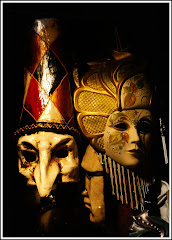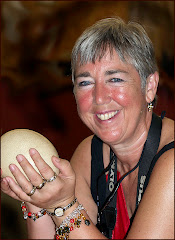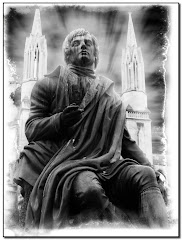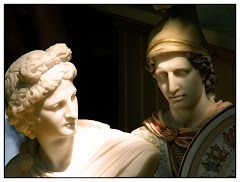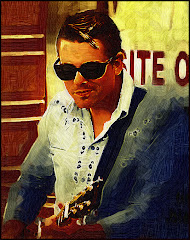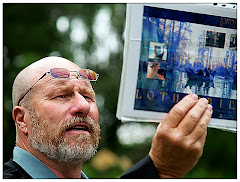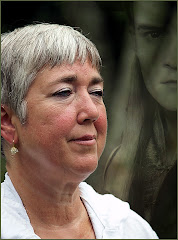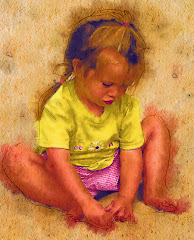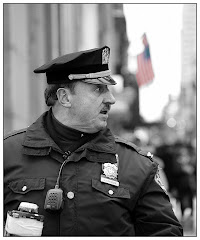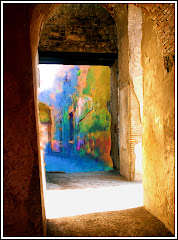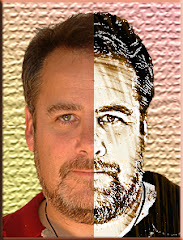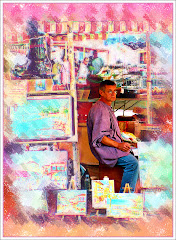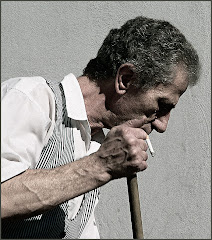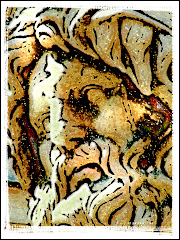 Where were you when you heard John Lennon had been shot? I was a reporter working at a rock radio station. It's one of the few times I was able to break into regular programming with a news flash.
Where were you when you heard John Lennon had been shot? I was a reporter working at a rock radio station. It's one of the few times I was able to break into regular programming with a news flash.It was a strange story. The first reports from the scene were that Lennon had escaped serious injury. Then came the news that he had been badly wounded and, following that, the sad news that he'd died.
Every visit to NYC will see me dragging my wife along so we can take a few minutes in Strawberry Field -- the John Lennon mosaic memorial in Central Park. While it is true that we just had the most wonderful trip there yet (see the blog below) -- my interest goes way beyond John Lennon.
I love to photograph Strawberry Fields because the people who show up there are so darn interesting. So are the items they leave behind and the stories that they share. I vividly recall making the trek to Strawberry Fields on a freezing day just before Christmas. There was just myself and a Japanese tourist. He stood there for a long time and then started to sing "Imagine." He didn't sing it particularly well -- but he was sincere. And he wasn't singing for me anyway.
Each time I have been there, someone has left something behind. Sometimes it's pictures. Often flowers. Sometimes a walrus or a guitar or a poem. But there has always been something. The interesting thing is that what's put on the ground usually stays there, untouched, which in my experience is very unusual for New York City.
Who does this? Until our most recent trip to Strawberry Fields, I had assumed that people brought stuff with them. But as I came back time and again I started to see that things were starting to look very much the same. Flowers were always arranged in a peace sign. I kept seeing the same props again and again.
The mystery was solved during a long conversation with Red, a street person who makes Strawberry Fields his hangout.
Who does all this work? Gary does.
Yup. According to "informed sources" (ie "Red" -- the guy the blog just below this is about) have revealed that Gary's behind everything. Red says a street person named "Gary" makes it his business to ensure the mosaic is treated with the reverence it deserves. He painstakingly sets out his props each morning and every day he makes the rounds of florist shops and they donate the flowers. It's one of those great New York stories that makes travel so very interesting.
Red thinks Gary does it because it allows him his "fifteen minutes of fame." But let's face it: cool is cool -- no matter why it's done.
Now you know.
As for photographing this great monument, you need to consider some things. It's flat. It's a mosaic. It's relatively big and it's round. (This could easily read "visually uninteresting" for a photographer.)
Light plays a key role in getting the mosaic picture just right. There is a time in the mid morning when the sunlight will dapple the mosaic and give you those rich tones like the one in the picture above. Use Photoshop to apply a Brightness/Contrast Adjustment Layer and you'll have the kind of graphic that would even make Gary smile. I'd planned for the photo to be off balance. I wanted shadows and flowers. I wanted the picture to be more than a shot of a round mosaic in Central Park.
But there are other considerations when photographing monuments. Give it a little thought. What's a monument for? It's purpose is to honor something or someone. Given that premise, it ALSO follows that the monument picture isn't just about the monument -- it's about the people who go to see it. Who are they? What do they leave behind? What do they do there?
We've all seen the Vietnam memorial, right? It has the names of soldiers who have died. Great concept -- lousy photograph. It's just a bunch of names on a flat stone. But most of us have seen pictures of men in uniform reaching forward and touching a name or weeping or sitting quietly and looking at the names. Suddenly the names on a flat stone can rip your heart out. Suddenly they aren't letters. They are people. Why? The subject (the wall) has been brought to life because it has been "humanized" by actual humans. You can't help but relate on some level to the graphic.
Words are easy to ignore.
People aren't. Figuring out a way to "humanize" a monument or statue will make your graphic talk to viewers in any language. We relate because an emotional connection has been built through a human element.
More than adding context (the fifty dollar way to say "where the thing is") -- the addition of people interacting with the monument adds an element the viewer can relate to. It humanizes stone.
Flowers on the Imagine mosaic do the same thing. They make the whole picture wonderful because they pose questions: "Who does this?" "Why do they do it?"
Of course now you know the answer -- at least as far as Strawberry Fields goes. It's Gary.
That's what Red says anyway.




